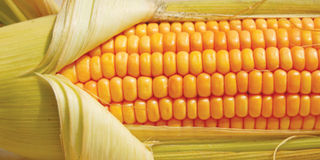Publishing rules on GMO imports starts

Photo/FILE
Labelling food products as being genetically modified has been contested globally in the last 20 years until two weeks ago when the US dropped its opposition to having food labels revealing the presence of genetically modified ingredients.
The much-awaited guidelines on the importation and handling of genetically modified maize are ready and interested millers could be invited to make applications before the end of this week.
The guidelines are already with the Government Printer.
According to the chairman of the National Biosafety Authority Miriam Kinyua, guidelines on three aspects of importing GMOs out of a possible eight were signed by the minister for Higher Education, Dr Hellen Sambili on Friday and could be published as early as Tuesday.
One of them involves conditions on importation, transportation or export of GM organisms. This will mean interested importers can start making applications to the authority.
According to Prof Kinyua, the authority is yet to work out on labelling of the products, as decided at a Cabinet meeting that recently approved the importation of GM maize.
Labelling has to meet international standards, indicating where such should be placed, the size and the wording.
Labelling food products as being genetically modified has been contested globally in the last 20 years until two weeks ago when the US dropped its opposition to having food labels revealing the presence of genetically modified ingredients.
Food labelling
Called the Codex Alimentarius Commission, a collection of the world’s food safety regulatory agencies, has been labouring for two decades to come up with consensus to guide this topic.
The new Codex agreement means that any country wishing to adopt GM food labelling will no longer face the threat of a legal challenge from the World Trade Organisation (WTO).
This is because national measures based on Codex guidance or standards cannot be challenged as a barrier to trade, according to the agreement reached in Geneva on July 5.
“We are particularly pleased that the new guidance that recognises that GM labelling is justified as a tool for post-market monitoring.
“This is one of the key reasons we want all GM foods to be required to be labelled — so that if consumers eat modified foods, they will be able to know and report to regulators if they have an allergic or other adverse reaction,” she said.
The labelling milestone is particularly welcome in Africa, which has been fighting on behalf of their consumers for the right to be informed about GM food according to Mr Samuel Ochieng’ of the Kenya Consumer Information Network.




